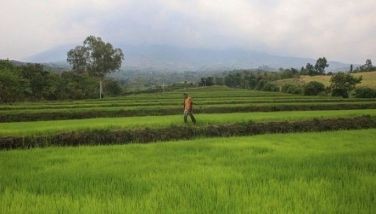DA: P42 per kilo rice program to be strictly implemented

MANILA, Philippines — The Department of Agriculture (DA) will strictly implement the P42 per kilo rice program in select public markets in Metro Manila to compete with the recent high prices of rice in the markets.
DA spokesman Arnel de Mesa said they are hurrying the implementation of the lower priced rice program in the National Capital Region before it is rolled out to other provinces.
Despite lower prices of palay, rice prices in the markets are still high because of the additional charges from retailers and traders, De Mesa said.
He assured the public of the sustainability of the Rice for All Program, as the government has allotted P5 billion for its implementation.
He added that the Food Terminal Inc. will handle the logistics needed for the program to keep prices low and ensure sustainability.
Meanwhile, the quinta committee of the House of Representatives, also known as the ‘Murang Pagkain’ supercommittee, aims to bring the price of rice as close as possible to President Marcos’ “aspiration of P20 per kilo,” House ways and means chairman Joey Salceda said yesterday.
“We will try to push the envelope as close to that as possible. What I can tell you is that it looks like there is a path to P30 per kilo,” Salceda said.
He said the supercommittee aims to bring down the prices of rice, which account for as much as 22 percent of total expenditures of poor households, and food in general, which takes up as much as 54 percent of the total spending of low-income families.
“A big part of that is cutting down excessive middleman and cartel profits. Landed price of imports – including movements in world prices and the tariff reduction implemented last July – has declined by around 24.9 percent year-on-year,” Salceda said.
“But consumer retail price are up 9.0 percent over the same period. It’s puzzling and an unmistakable sign of shenanigans in the rice trade sector,” he added.
Salceda said this is reason why the supecommittee is looking into rice price manipulation over the past 10 years, starting with the rice price increase in 2012 to 2013 and the price manipulation in 2016 to 2018.
He said the supercommittee wants to learn from what happened and see whether the same network of smugglers and cartels are still in the game.
“The question is, where did the benefits of the decrease in tariff go? And how can we cut those excessive profits,” he said.
Salceda said the supercommittee is eyeing to have an initial recommendation to Marcos by Christmas. — Jose Rodel Clapano
- Latest
- Trending
































